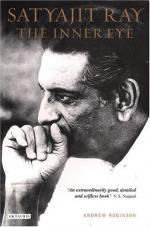|
This section contains 670 words (approx. 3 pages at 300 words per page) |

|
[Perhaps] the most remarkable aspect of Ray's body of work is its range and versatility. Even within the trilogy, each of the films is strikingly different from the others: Pather Panchali, a Dovzhenko-like poem of the earth and of human lives coming to definition against the anonymity of nature's cycles; Aparajito, owing less perhaps to De Sica than to Zavattini in the latter's call for an open form; and The World of Apu, in which a narrative of spiritual questing that reminds one of Hesse in its largeness of gesture is given an embodiment whose critical detachment and admittance of a natural world are as different from the emotional posturing of Hesse as they are again from any of the stereotypes of a film by Ray. Before completing the trilogy, Ray made two other works, The Philosopher's Stone (1957), a comic fantasy and the only one of Ray's films...
|
This section contains 670 words (approx. 3 pages at 300 words per page) |

|


